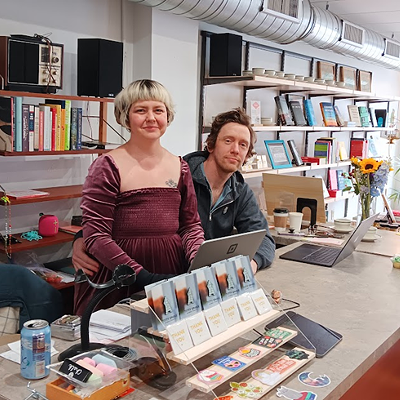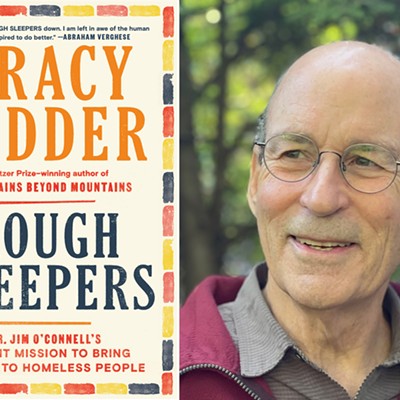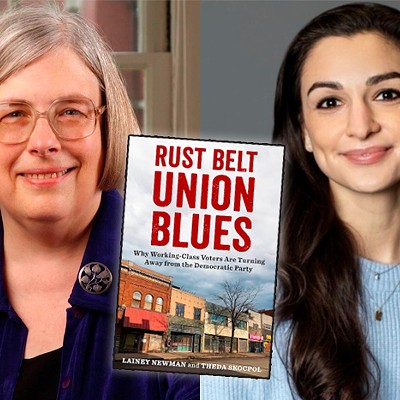Many of the stories in Catherine Gammon’s latest collection, The Gunman & the Carnival (Baobab Press) are set in Los Angeles, where the Squirrel Hill-based writer grew up.
But it wasn’t until Gammon came to Western Pa. in 1992 to teach at the University of Pittsburgh that she began to understand her birthplace.
“After I had been here a few years, I kind of got new insight into where I had come from,” Gammon says during an interview with Pittsburgh City Paper, “and all the other places I ever lived as being, especially Los Angeles, a home to transient people who transplanted there. Not so many people who were from there were there for generations. And all the places I lived were places that attracted people from somewhere else. And that was the world I tended to live in.”
Gammon will read from The Gunman & the Carnival April 18 at Riverstone Bookstore in Squirrel Hill with Jane McCafferty.
The stories in The Gunman & the Carnival feature characters wrestling with issues of identity and perception, and in some instances, a desire to disappear. In “A Vampire Story?” two minor actors “were too often recognized despite her simpler makeup and hair, despite his clean-shaven face and absence of his best-known character’s long black curls,” Gammon wrote. In "Claudine," the title character “felt herself simultaneously a stranger and deeply known.” And in "Pack Rat, Will Be Well," a character wants to be noticed by her neighbor: “She wanted to be seen, wanted Eddie, that old scarecrow no older than she was most likely, to see her …”
Even when a character disappears from a story, or when a story ends, they echo, reverberate, in absence.
“Somebody hearing a reading observes that an emphasis hunts silences, which I think works in the same way,” Gammon says. “There’s this white space, the absence, the limitation of sound or the explosion of sound that isn’t verbal, it’s kind of part of the reality.”
Gammon’s work is influenced by her spirituality. She left the University of Pittsburgh shortly after attaining tenure, “much to many people’s dismay,” she says, to become a Soto Zen priest. Gammon lived at a Zen center, isolated from the concerns of what is generally considered the normal world.
“When you’re living there, you’re doing a lot of meditation, you’re doing a lot of work to keep the temple going,” she says of living at the center. There are ceremonies — it’s a ceremonial practice — but there’s also a lot of physical work as well.”
Eventually the lure of writing beckoned. Gammon left the Zen center and transitioned back to “living in the so-called worlds.” For the last few years, she’s worked on stories that are richly evoked, containing short glimpses of lives. In some ways, the stories reflect her life, with endings yet to be written, the outcomes open-ended.
Gammon agrees that her stories cannot be categorized within what is considered contemporary fiction. Like her literary influences — Thomas Pynchon, William Faulkner, Toni Morrison — her stories have an unfettered uniqueness.
“I might be against the grain,” Gammon says. “I think I’ve been against the grain in my writing life a number of ways. … I don’t know if I can generalize what I do, but I’m less interested in things that are fully packaged and tied up in a bow.”
Squirrel Hill author Catherine Gammon explores how loud silence can be in The Gunman & the Carnival
A Reading with Catherine Gammon, Sherrie Flick, and Mike Good, Apr. 18, 7 p.m., Riverstone Bookstore, 5841 Forbes Ave., Squirrel Hill, riverstonebooks.com


















